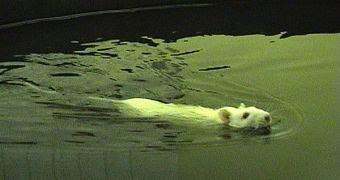In a breakthrough accomplishment that could have significant implications for humans as well, experts at the University of California in Los Angeles (UCLA) managed to cure rats suffering from spinal-cord injuries, using nothing more than electrical stimulation, and a daily routine of exercises. The small rodents were then able to walk, and even run again, while at the same time sustaining their own, full weight atop a treadmill, PhysOrg reports. Details of the team's success appear in the September 20th online issue of the journal Nature Neuroscience.
“The spinal cord contains nerve circuits that can generate rhythmic activity without input from the brain to drive the hind leg muscles in a way that resembles walking called 'stepping.' Previous studies have tried to tap into this circuitry to help victims of spinal cord injury. While other researchers have elicited similar leg movements in people with complete spinal injuries, they have not achieved full weight-bearing and sustained stepping as we have in our study,” UCLA David Geffen School of Medicine Professor of Neurobiology and Physiological Sciences Reggie Edgerton explains the results. He has also been the principal investigator on the new research.
In their experiments, the scientists used rats that had suffered from complete spinal-cord injuries, in that they had no traces of voluntary movements left in their hind legs. The experts placed these rodents on small treadmills, and then administered a drug that acted directly on serotonin, a neurotransmitter. Small wires were then employed to administer low levels of electrical currents on the spinal cord, just below the place where the injury had been sustained. This combination provided the necessary conditions for walking motion to appear in the rats' hind legs, and the animals were able to sustain their own weight on their legs. The team reports that this was made possible through the activation of the spinal rhythm-generating circuitry.
Over several weeks of intense treadmill exercises, the rats became able to fully sustain their own weight on their feet, and also managed to regain their ability of walking backwards, and even sideways. The experiments also allowed them to run again, keeping on their feet all by themselves. Still, the experts say, because the spinal cord was still severed between the brain and the nerve muscles, the rats could not decide for themselves when to walk. It remained for the researchers to decide when this would happen.

 14 DAY TRIAL //
14 DAY TRIAL //